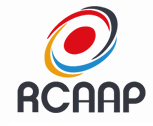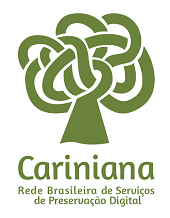Selenium supplementation levels and sources in post-larvae Nile tilapia diet
DOI:
https://doi.org/10.5433/1679-0359.2022v43n2p611Keywords:
Muscle fiber, Performance, Selenomethionine, Selenium yeast, Selenoprotein.Abstract
Fish larviculture exert great influence in the subsequent phases, in which nutrition is a basic prerequisite for success. Therefore, when it is in an intensified production system, it promotes the limitation of some minerals, making it necessary to supplement selenium in diets for post-larvae. The objective of this study was to evaluate selenium levels and sources in post-larvae Nile tilapia diets on muscle performance and histology. A total of 1,260 post-larvae with an initial average weight of 0.010 g were used, distributed in a completely randomized design in a factorial scheme with four supplementation levels (0.6; 0.9; 1.2 and 1.5 mg of Se/Kg) and two sources (sodium selenite and selenium yeast), plus the negative control, with 35 post-larvae Nile tilapia used per experimental unit. The physical-chemical parameters of water quality were within those recommended for tilapia cultivation. Feed consumption (p < 0.05) and hepatosomatic index (p < 0.05) were affected by the source used. Effects of supplemented selenium levels and sources were not observed for the other performance variables. Higher values for final height, final width, specific development rate and protein efficiency rate were found (p < 0.05) when comparing the control diet with diets containing the sodium selenite source. No effects on muscle fiber morphometry were observed (p > 0.05) in the studied variables. It is concluded that 0.6 mg of selenium in the diet, regardless of the source used, met the mineral requirement for post-larvae Nile tilapia.Downloads
References
Biller-Takahashi, J. D., Takahashi, L. S., Mingatto, F. E., & Urbinati, E. C. (2015). The immune system is limited by oxidative stress: dietary selenium promotes optimal antioxidative status and greatest immune defense in pacu Piaractus mesopotamicus. Fish Shellfish Immunol, 47(1), 360-367. doi: 10.1016/j.fsi. 2015.09.022
De Bock, M. F. S., Moraes, G. S. D. O., Almeida, R. G. D. S., Vieira, K. D. D. S., Santoro, K. R., Bicudo, A. J. D. A., & Molica, R. J. R. (2020). Exposure of Nile Tilapia (Oreochromis niloticus) fingerlings to a saxitoxin producing strain of raphidiopsis (Cylindrospermopsis) raciborskii (Cyanobacterium) reduces growth performance and increases mortality rate. Environmental Toxicology and Chemistry, 39(7), 1409-1420. doi: 10.1002/etc.4728
Ferrari, J. E. C., Barros, M. M., Pezzato, L. E., Gonçalves, G. S., Hisano, H., & Kleemann, G. K. (2004). Níveis de cobre em dietas para a tilápia do Nilo, Oreochromis niloticus. Acta Scientiarum. Animal Sciences, 26(4), 429-436. doi: 10.4025/actascianimsci.v26i4.1713
Furuya, W. M. (2010). Tabelas brasileiras para nutrição das Tilápias. Toledo: GFM. Recuperado de https://docplayer.com.br/7805231-Tabelas-brasileiras-para-a-nutricao-de-tilapias.html.
Hayashi, C., Boscolo, W. R., Soares, C. M., & Meurer, F. (2002). Exigência de proteína digestível para larvas de Tilápia do Nilo (Oreochromis niloticus), durante a reversão sexual. Revista Brasileira Zootecnia, 31(2), 823-828. doi: 10.1590/S1516-35982002000400003
Hung, S. W., Tu, C. Y., Wang, W. S. (2007). In vivo effects of adding singular or combined anti-oxidative vitamins and/or minerals to diets on the immune system of tilapia (Oreochromis hybrids) peripheral blood monocyte-derived, anterior kidney-derived, and spleen-derived macrophages. Veterinary Immunology and Immunopathology, 115(1-2), 87-99. doi: 10.1016/j.vetimm.2006.09.004
Jagtap, R., Maher, W., Krikowa, F., Ellwood, M. J., & Foster, S. (2016). Measurement of selenomethionine and selenocysteine in fish tissues using HPLC-ICP-MS. Microchemical Journal, 128, 248-257. doi: 10. 1016/j.microc.2016.04.021
Katarzyna, B., Taylor, R. M., Szpunar, J., Lobinski, R., & Sunde, R. A. (2020). Identification and determination of selenocysteine, selenosugar, and other selenometabolites in turkey liver. Metallomics 12(5), 758-766. doi: 10.1039/d0mt00040j
Khalil, H. S., Mansour, A. T., Goda, A. M. A., & Omar, E. A. (2019). Effect of selenium yeast supplementation on growth performance, feed utilization, lipid profile, liver and intestine histological changes, and economic benefit in meagre, Argyrosomus regius, fingerlings. Aquaculture, 25, 135-143. doi: 10.1016/j. aquaculture.2018.11.018
Kleemann, G. K. (2002). Exigência nutricional de ferro da tilápia do Nilo Oreochromis niloticus. Dissertação de Mestrado, Universidade Estadual Paulista, Botucatu, São Paulo, SP, Brasil. Retrieved from https:// bibdig.biblioteca.unesp.br
Le, K. T., & Fotedar, R. (2014). Immune responses to Vibrio anguillarum in fish, Seriola lalandi, receiving selenium supplementation. Journal World Aquaculture Society, 45(2), 138-148. doi: 10.1111/jwas.12104
Lee, S., Nambi, R. W., Won, S., Katya, K., & Bai, S. C. (2016). Dietary selenium requirement and toxicity levels in juvenile Nile tilapia, Oreochromis niloticus. Aquaculture, 464, 153-158. doi: 10.1016/j. aquaculture.2016.06.027
Lin, Y. H., & Shiau, S. Y. (2005). Dietary selenium requirements of juvenile grouper, Epinephelus malabaricus. Aquaculture, 250(1-2), 356-363. doi: 10.1016/j.aquaculture.2005.03.022
Mansour, A. T.-E., Goda, A. A., Omar, E. A., Khalil, H. S., & Esteban, M. A. (2017). Dietary supplementation of organic selenium improves growth, survival, antioxidant and immune status of meagre, Argyrosomus regius, juveniles. Fish and Shellfish Immunology, 68, 516-524. doi: 10.1016/j.fsi.2017.07.060
Meurer, F., Hayashi, C., Boscolo, E. R., Schamber, C. R., & Bombardelli, R. A. (2005). Fontes proteicas suplementadas com aminoácidos e minerais para a tilápia do Nilo durante a reversão sexual. Revista Brasileira Zootecnia, 34(1), 1-6. doi: 10.1590/S1516-35982005000100001
National Research Council – NRC. (2011) Nutrient requirements of fish and shrimp (2nd rev. ed.). Washington, D.C.: National Academy Press.
Pilarczyk, B., Tomza Marciniak, A., Pilarczyk, R., Marciniak, A., Bakowska, M., & Nowakowska, E. (2019). Selenium, Se. In Mammals and Birds as Bioindicators of Trace Element Contaminations in Terrestrial Environments (pp. 301-362). Springer; Cham.
Prauchner, C. A. (2020). A importância do selênio para a agropecuária e saúde humana. Santa Maria, RS, Brasil: Fundação de Apoio a Tecnologia e Ciência-Editora UFSM.
Rathore, S. S., Murthy, H. S., Girisha, S. K., Nithin, M. S., Nasren, S., Mamun, M. A. A., & Pai, M. (2021). Supplementation of nano selenium in fish diet: impact on selenium assimilation and immune regulated selenoproteome expression in monosex Nile tilapia (Oreochromis niloticus). Comparative Biochemistry and Physiology Part C: Toxicology & Pharmacology, 240, 108907. doi: 10.1016/j.cbpc.2020.108907
Rui, L. (2014). Energy metabolism in the liver. Comprehensive Physiology, 4(1), 177-197. doi: 10.1002/cphy. c130024
Santos, C. E., & Fonseca, J. (2013). Selénio: fisiopatologia clínica e nutrição. Associação Portuguesa de Nutrição Entérica e Parentérica, 7(1), 2-9.
Schram, E., Pedrero, Z., Cámara, C., Heul, J. W. V. D., & Luten, J. B. (2008). Enrichment of African catfish with functional selenium originating from garlic. Aquacultura, 39(8), 850-860. doi: 10.1111/j.1365-2109. 2008.01938.x
Schrauzer, G. N. (2001). Commentary: nutrition selenium supplements: product types, quality, and safety. Journal College of Nutrition, 20(1), 1-4. doi: 10.1080/07315724.2001.10719007
Schulter, E. P., & Vieira, J. E. R., Fº. (2018). Desenvolvimento e potencial da tilapicultura no Brasil. Revista de Economia e Agronegócio, 16(2), 177-201. doi: 10.25070/rea.v16i2.554
Sele, V., Ornsrud, R., Sloth, J., Berntssen, M. H. G., & Amlund, H. (2018). Selenium and selenium species in feeds and muscle tissue of Atlantic salmon. Jounal of Trace Flements in Medicine and Biology, 47, 124-133. doi: 10.1016/j.jtemb.2018.02.005
Silva, D. R. P. D. (2015). Adição de L-glutamina+ ácido glutâmico e L-argenina na dieta de leitões recém desmamados. Dissertação de mestrado em Produção de não ruminantes, Universidade Federal da Paraíba, campus II, Areia, PB, Brasil. Recuperado de https://repositorio.ufpb.br/jspui/handle/123456789/15865
Takahashi, L. S., Biller-Takahashi, J. D., Mansano, C. F. M., Urbinati, E. C., Gimbo, R. Y., & Saita, R. V. (2017). Saita, long-term organic selenium supplementation overcomes the trade-off 538 between immune and antioxidant systems in pacu (Piaractus mesopotamicus), Fish 539. Shellfish Immunology, 60, 311-317. doi: 10.1016/j.fsi.2016.11.060
Wang, L., Zhang, X., Wu, L., Lui, Q., Zhang, D., & Yin, J. (2018). Expression of selenoprotein genes in muscle is crucial for the growth of rainbow trout (Oncorhynchus mykiss) fed diets supplemented with selenium yeast. Aquaculture, 492, 82-90. doi: 10.1016/j.aquaculture.2018.03.054
Yamamoto, F. Y. (2011). Microminerais (Cu, Fe, Mn, Se e Zn) na nutrição de peixes, uma revisão bibliográfica. Trabalho de Conclusão de Curso Apresentado no Curso de Engenharia de Aquicultura, Centro de Ciências Agrárias, Universidade Federal de Santa Catarina Florianópolis/SC – Brasil. Recuperado de http://repositorio.ufsc.br/xmlui/handle/123456789/25605
Yamashita, M., & Yamashita, Y. (2015). Selenoneine in marine organisms. In S.-K. Kim (Ed.), Springer manual of marine biotechnology (pp. 1059-1069). Berlin, Heidelberg: Springer.
Yamashita, Y., Yabu, T., & Yamashita, M. (2010) Discovering the strong antioxidant selenonein in the metabolism of selenium tuna and redox, World Journal of Biological Chemistry, 1(5), 144-150. doi: 10. 4331/wjbc.v1.i5.144
Zhan, X. A., Wang, M., Zhao, R. Q., Li, W. F., & Xu, Z. R. (2007). Effects of different selenium source on selenium distribution, loin quality and antioxidant status in finishing pigs. Animal Feed Science and Technology 132(3-4), 202-211. doi: 10.1016/j.anifeedsci.2006.03.020
Zhang, H., Feng, X. B., Chan, H. M., & Larssen, T. (2014). New insights into traditional health risk assessments of mercury exposure: implications of selenium. Environmental Science & Technology, 48(2), 1206-1212. doi: 10.1021/es4051082
Downloads
Published
How to Cite
Issue
Section
License
Copyright (c) 2021 Semina: Ciências Agrárias

This work is licensed under a Creative Commons Attribution-NonCommercial 4.0 International License.
Semina: Ciências Agrárias adopts the CC-BY-NC license for its publications, the copyright being held by the author, in cases of republication we recommend that authors indicate first publication in this journal.
This license allows you to copy and redistribute the material in any medium or format, remix, transform and develop the material, as long as it is not for commercial purposes. And due credit must be given to the creator.
The opinions expressed by the authors of the articles are their sole responsibility.
The magazine reserves the right to make normative, orthographic and grammatical changes to the originals in order to maintain the cultured standard of the language and the credibility of the vehicle. However, it will respect the writing style of the authors. Changes, corrections or suggestions of a conceptual nature will be sent to the authors when necessary.
10.5585/eccos.n65.23616
















